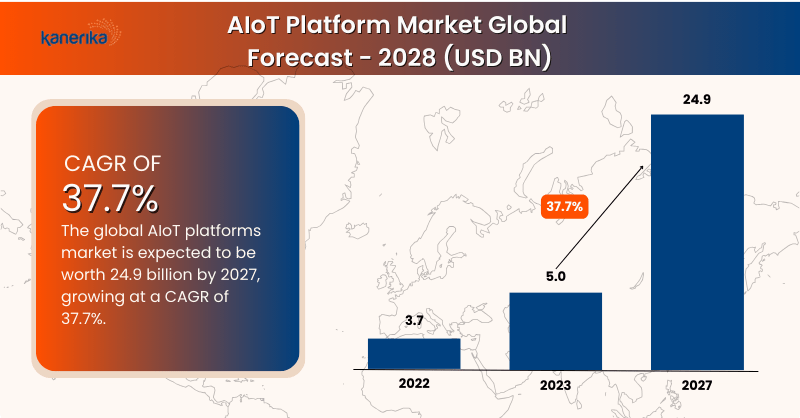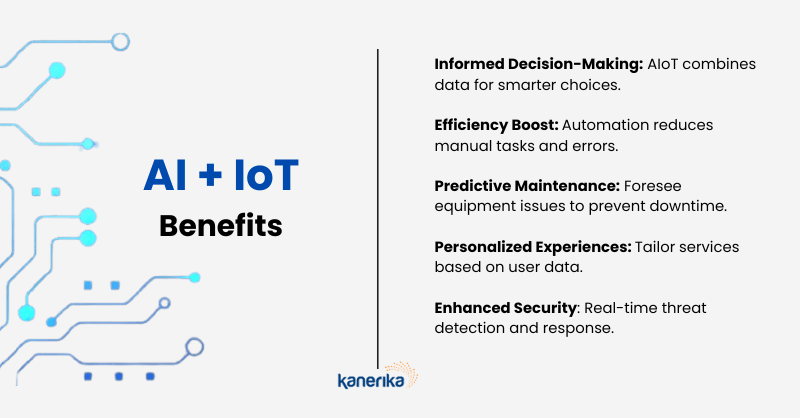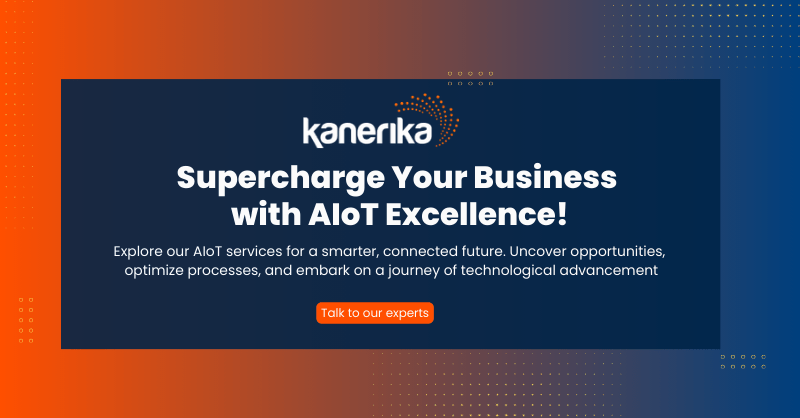Have you ever wondered why Nike, once a contender in the wearable market with its groundbreaking FuelBand in 2012, had to bid farewell to the wearable device business in less than two years of its launch? On the other hand, Apple commands an impressive 34.1% of the global smartwatch market share. The tale of the Nike FuelBand and Apple’s smartwatches offers a compelling glimpse into the transformative power of adaptation in our data-centric world.
Nike’s FuelBand, a pioneering fitness tracker, faltered due to its inability to embrace the shifting dynamics of data. It remained confined to basic fitness tracking while the world moved toward a more interconnected, data-driven future. On the other hand, Apple recognized the potential and offered a comprehensive solution. Their smartwatches seamlessly integrate into the broader technology ecosystem, offering a plethora of functionalities that make our lives easier.
The lesson here is clear: in a data-centric world, adaptability and data integration are paramount. AIoT (Artificial Intelligence Internet of Things) is a match made in heaven where AI’s intelligence with IoT connectivity sparks significant innovations. It’s about recognizing opportunities, harnessing the power of data, and forging seamless connections across devices and systems.
As we delve deeper into the realm of AIoT, we’ll discover how it leverages data intelligence to revolutionize industries, optimize processes, and unlock unprecedented potential. Just as Apple’s smartwatches transcended mere fitness tracking to become indispensable wearable companions, AIoT can redefine how we interact with technology, enhancing our lives and propelling us into an era of innovation and interconnectedness.
What is AIoT?
Artificial Intelligence of Things (AIoT) is a powerful fusion of Artificial Intelligence (AI) and the Internet of Things (IoT). This synergy brings together AI’s analytical abilities with IoT’s network of interconnected devices. Essentially, AIoT equips machines with smarter decision-making capabilities by analyzing the data gathered through IoT devices.
At the core of AIoT is the idea of integrating AI directly into IoT infrastructures, creating a more intelligent network that not only collects data but also analyzes and learns from it. This integration enables the deployment of AI capabilities like machine learning and deep learning at the edge of the network, closer to where data is actually gathered—a concept known as Edge AI or Edge Intelligence. This proximity enhances the efficiency, robustness, and scalability of data processing.
Our team at Viso.ai leverages the potential of visual AIoT, combining Computer Vision and IoT. We manage Viso Suite, a comprehensive platform that supports the development, deployment, and operation of large-scale AIoT applications with no-code and low-code options. This platform is instrumental in enabling leading companies to harness the power of AI vision applications effectively.

Understanding the Need for AIoT
To grasp why AI and IoT are such a transformative combination, it’s important to consider the distinct advantages each technology brings to the table. AI is all about creating systems that can mimic human intelligence—perception, reasoning, and understanding. These capabilities are crucial for developing intelligent systems across various industries, enhancing efficiency and fostering innovation in product and service development.
IoT, on the other hand, involves networks of connected devices that collect and transmit data in real-time. These devices, equipped with sensors or user input interfaces, generate vast quantities of data. By integrating AI, this data can be processed intelligently, enabling IoT devices not just to collect and transmit data, but to understand and analyze it. This elevates the functionality of IoT from mere data logging to intelligent decision-making and automated actions, thereby significantly boosting automation and efficiency across various applications.

Understanding the Difference between AI and IoT
AI and IoT may have distinct functions and focuses, but their collaboration creates a transformative force in the digital era. Understanding the AI and IoT differences and their complementary nature is crucial for businesses and industries seeking to harness the combined potential for innovation and efficiency.
Distinct Focus
AI is centered around creating intelligent algorithms and systems that can mimic human-like decision-making and problem-solving. It focuses on cognitive processes such as learning, reasoning, and problem-solving.
IoT, on the other hand, is about connecting physical devices to the internet or each other to collect, transmit, and exchange data. It emphasizes the networking of objects and sensors in the physical world.
Functionality
AI enables devices or systems to make sense of data, learn from it, and make autonomous decisions. It adds intelligence, enabling devices to understand and respond to their environment.
👉Read More: How Data Transformation Tool FLIP Empowers Businesses To Scale
IoT devices primarily collect and transmit data from sensors and actuators. They provide a means to gather information about the physical world.
Data Usage
AI relies heavily on data for training and improving algorithms. It requires large datasets to recognize patterns and make informed decisions.
IoT generates the data that AI can utilize. IoT devices collect real-time data from the physical world, which AI can analyze to derive insights and inform actions.

Interactions
AI interacts with data and makes decisions. It can be integrated into IoT systems to process and analyze the data generated by connected devices.
IoT interacts with the physical world, collecting data from sensors and devices. It can benefit from AI’s capabilities to make sense of this data.
Complementary Nature
The true power of AI and IoT emerges when they work together. IoT provides the data that fuels AI algorithms, making them smarter and more context-aware. AI, in turn, enhances IoT by enabling real-time data analysis, predictive maintenance, and intelligent automation.
AI adds brainpower to IoT, making it more than just a network of connected devices. Together, they create AIoT (Artificial Intelligence Internet of Things), a synergy that enables data-driven insights, autonomous decision-making, and intelligent responses to the physical world. This complementary relationship drives innovation, efficiency, and transformative capabilities across various industries.
👉Read More: 10 Reasons Why Your Business Needs AI Consulting
 AIoT Statistics 2023
AIoT Statistics 2023
Benefits of Combining AI with IoT
The fusion of Artificial Intelligence (AI) with the Internet of Things (IoT) brings forth a range of substantial benefits, key among them being enhanced operational efficiency and significant cost reductions.
1. Enhanced Operational Efficiency
AIoT elevates operational performance by enabling machines to analyze data and identify patterns using machine learning techniques. This capability not only speeds up the generation of operational insights but also enhances the detection and resolution of issues, and bolsters the automation of previously manual tasks. For instance, AIoT is instrumental in automating vision-based quality inspections in industrial settings, using cameras to ensure quality control and compliance with safety standards such as the detection of necessary protective gear like masks and helmets.
2. Enhanced Customer Experiences
AIoT can dramatically improve customer service and satisfaction by providing more personalized, responsive interactions. For instance, in retail, AIoT enables smart stores that can track customer behavior and preferences to offer tailored recommendations and services.

3. Facilitates Real-Time Monitoring
Real-time monitoring facilitated by AIoT systems minimizes downtime and averts costly disruptions. These systems continuously oversee operations to identify anomalies, make predictions, and take decisions autonomously, thereby delivering faster and more objective outcomes. In industries such as oil and gas, AIoT applications like remote leakage detection using cameras are crucial for maintaining safety and efficiency.
4. Scalability and Flexibility
AIoT systems are designed to scale seamlessly as the amount of data and the number of connected devices grow. This scalability ensures that businesses can expand their operations without significant increases in cost or complexity.
5. Reduction in Operational Costs
AIoT contributes significantly to lowering operational expenses by developing smarter systems that optimize resource use. For example, smart building solutions adjust lighting and temperature based on real-time occupancy data, leading to energy savings. Similarly, in smart factories, AIoT devices are critical for predictive maintenance and machine health monitoring, helping to prevent failures and reduce potential costly interruptions.
6. Improved Decision Making
With the ability to analyze vast amounts of IoT-generated data, AIoT helps businesses make more informed decisions. By leveraging predictive analytics and machine learning, companies can anticipate market trends, customer needs, and potential system failures before they occur.

7. Enhanced Security
AIoT can improve security measures by detecting anomalies and potential threats in real-time. For example, smart surveillance systems can identify unusual activities or unauthorized access, enhancing security in smart homes, offices, and public spaces.
8. Environmental Monitoring and Sustainability
AIoT applications are crucial in environmental monitoring and managing sustainability efforts. They can track pollution levels, weather conditions, or energy usage, helping to implement more eco-friendly practices and policies.
9. Improves Risk Management
AIoT enhances an organization’s ability to manage risks by predicting potential issues and preemptively addressing them. This ranges from monitoring water levels and analyzing employee safety, to crowd management in public areas—a key feature in smart city applications. Moreover, insurers are increasingly utilizing AIoT to assess risks in machinery and entire production facilities, allowing for more informed insurance practices.
 AI and IoT Benefits
AI and IoT Benefits
Top AI and IoT Examples and Uses in the Modern Times
In this section, we’ll demonstrate how AIoT solutions combine AI’s intelligence with IoT’s connectivity to address challenges across various industries.
Healthcare
Remote Patient Monitoring: IoT intelligence remotely enables continuous monitoring of patients’ vital signs and health conditions, improving healthcare access and reducing hospitalization rates
Personalized Medicine: Can you imagine your data giving you a customized medicine plan? Isn’t this what we all have been longing for since the dawn of civilization? AIoT will be vital in tailoring treatment plans and drug dosages based on an individual’s unique health data
Predictive Analytics: Healthcare providers leverage AIoT for early disease detection and predictive analytics to intervene proactively
Manufacturing
Predictive Maintenance: AIoT in manufacturing helps optimize manufacturing operations by predicting equipment failures. Corporates like Siemens use AIoT for predictive maintenance in manufacturing, assisting factories to prevent equipment failures and minimize downtime
Quality Control: Can a camera detect defects during the assembly process? An AIoT-powered cameras can! Foxconn, a major electronics manufacturer, employs AIoT-powered cameras to enhance product quality control with real-time monitoring and automated defect detection
Supply Chain Efficiency: With all the available automation processes, organizations can improve supply chain visibility, tracking products and materials at every stage
Agriculture
Precision Farming: AIoT has revolutionized agriculture to a great extent with smart sensors, drones, and autonomous vehicles, enabling precise resource allocation and crop management. For example, Precision Agriculture technology integrates IoT sensors and AI to optimize crop farming and reduce resource waste
Livestock Monitoring: As the reliability of traditional daily nutrition sources becomes increasingly uncertain, innovative technologies enabled by IoT intelligence provide state-of-the-art assistance to dairy farmers in monitoring the health and behavior of their dairy cows. Technologies like EID readers and digital weighing scales provide the intel to keep animals in top health

Transportation
Autonomous Vehicles: Everybody loves Tesla. AIoT has been the driving force behind these powerful self-driving cars. They aren’t just built for luxury, but also equipped with technologies to enhance transportation safety, efficiency, and convenience
Traffic Management: Smart traffic systems can further optimize traffic flow and reduce congestion, saving time and fuel. London, for example, has installed traffic counting sensors at critical locations across the city. This data is used to manage traffic flow and ease congestion
Smart Cities
Infrastructure Management: At its core, IoT intelligence equips businesses to improve infrastructure management – from energy-efficient street lighting to waste management. For example, digitizing district heating saves power costs for property owners and helps heating suppliers optimize their heating networks
Public Safety: AIoT enhances smart surveillance systems by adding AI capabilities to IoT-connected cameras. It enables object detection, facial recognition, anomaly detection, and predictive analytics. Additionally, AIoT-powered surveillance systems offer real-time alerts, traffic management, and integration with IoT sensors for improved security, privacy protection, and efficiency in various applications
👉Read More: Navigating Challenges For Generative AI Use Cases With Kanerika
Retail
Personalized Shopping: Personalized shopping experiences recommending products based on customer preferences and behaviors are some of the most notable functionalities driven by the amalgamation of IoT and AI. From your favorite Netflix to FarFetch – every big or small data-driven company uses the combined power of AIoT to keep you hooked to their brand
Inventory Management: AIoT-powered real-time inventory tracking reduces out-of-stock situations and minimizes overstocking
Energy
Smart Grids: AIoT optimizes energy distribution, minimizes power outages, and enhances energy efficiency. For example, Pacific Gas and Electric (PG&E) in the United States employs AIoT to manage its electricity grid, balancing supply and demand more effectively
Energy Conservation: Smart homes and buildings that use intelligent climate control and lighting solutions have recorded about 40% reduction in energy consumption

Challenges of Implementing AIoT
- Data Security: Ensuring the privacy and security of expansive data collected by AIoT systems is crucial, necessitating robust protection measures and adherence to privacy laws.
- Interoperability: Diverse IoT devices often use different standards, complicating their ability to communicate seamlessly; standardizing protocols is essential but can be resource-intensive.
- Data Management: Handling the vast amounts of varied data generated by AIoT devices requires advanced analytics and scalable storage solutions.
- Initial Costs: Setting up AIoT systems involves significant investment in technology and skills, which can be prohibitive for budget-conscious organizations.
- Skill Shortage: There is a significant demand for professionals skilled in AI and IoT, which outstrips supply, requiring substantial training or hiring efforts.
- Ethical Considerations: Implementing AIoT must consider potential job displacement and algorithmic bias to ensure ethical usage and societal acceptance.

AIoT Excellence Awaits a Brighter Tomorrow
As we’ve explored the remarkable potential of AIoT (Artificial Intelligence Internet of Things) throughout this article, it’s clear that this synergy of AI and IoT is more than just a technological advancement—it’s the pathway to future-proofing your business. The dynamic landscape of today’s markets demands swift and informed decision-making, and AIoT equips you with the tools to achieve just that.
By harnessing the power of AIoT, you position your business at the forefront of innovation and competitiveness. It’s not merely about staying afloat; it’s about thriving in the data-driven era.
Kanerika, a trusted leader in AIoT technology, is your partner in this transformative journey. We’ve witnessed the tangible benefits that AIoT solutions bring to businesses across diverse industries. From streamlining processes to improving security, from enhancing decision-making to boosting efficiency—AIoT is the key to future success.
So, if you’re ready to be a trailblazer in your industry, it’s time to take the leap into AIoT. Kanerika is here to guide you every step of the way.
 AIoT Solutions Kanerika USA
AIoT Solutions Kanerika USA
FAQs
How can AIoT be applied in different industries?
AIoT has a wide range of applications across industries. For instance, in healthcare, AIoT devices like wearable medical devices monitor patients’ vital signs in real time. In manufacturing, it is used for predictive maintenance and quality control. AIoT also enhances operations in smart cities through traffic flow management and energy conservation.
What are the main benefits of AIoT?
The key benefits of AIoT include enhanced operational efficiency, reduced costs through predictive maintenance, and better data-driven decision-making. AIoT systems enable real-time data analysis, leading to improved business outcomes and customer experiences.
What are the security implications of AIoT?
While AIoT offers numerous benefits, it also presents new challenges in terms of security. Integrating AI with IoT expands the attack surface, requiring advanced security measures to protect against potential cyber threats. Effective AIoT deployment must include robust security protocols to safeguard data integrity and privacy.
What challenges do businesses face when integrating AIoT?
The integration of AIoT poses several challenges, including data privacy and security risks, interoperability issues among diverse IoT devices, and the complexity of managing vast data volumes effectively. Companies must also address the substantial initial investment in infrastructure and technology required to implement AIoT solutions.
What is the future potential of AIoT?
The future of AIoT looks promising with endless possibilities for innovation and improvement across all sectors. Advances in AI and IoT technologies are expected to drive more personalized, efficient, and secure services, leading to better health outcomes, more efficient cities, and more responsive industries.